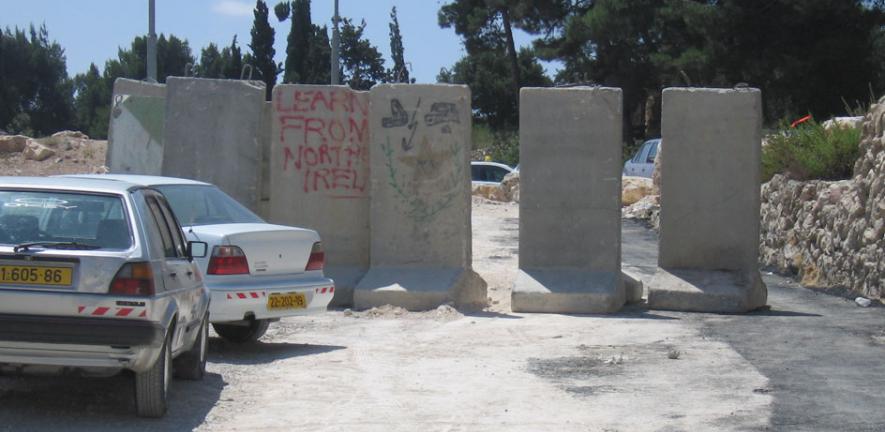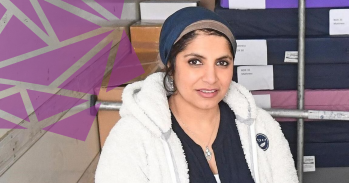
Conflict is inherent to the urban condition, yet only in some cities do contention and dissent erupt to unacceptable and destructive levels. How do contested cities absorb and reflect this conflict?
Conflict is inherent to the urban condition, yet only in some cities do contention and dissent erupt to unacceptable and destructive levels. How do contested cities absorb and reflect this conflict?
The research is driven by an interest in the capacity of architecture and the urban environment to absorb and manifest conflict, a concern grounded in history but made painfully evident by the iconic nature of the the World Trade Center in the 9/11 attacks.
For embattled cities fractured by national, ethnic and religious conflicts, the ‘peace process’ may seem oriented on a single goal, like a distant light at the end of a long tunnel; however, this road is rarely linear and resolution is often frustratingly elusive. Even more disturbing, apparently rejuvenated and peaceful cities may slip back into patterns of sectarian strife and division. Not to diminish the value of negotiated political settlements, emergence from long-term damage to everyday life in contested and sometimes violent urban settings will usually require more than a collection of agreements. If a city is to be viable for all of its inhabitants, not only must there be equal measures of justice and security, but also the opportunities to take action, contribute to and benefit from the wider civic culture. The city itself must be healed. And, in turn, a robust city will underlie and help to encourage the positive impacts of a political peace process.
There are no clear means for achieving this sort of reciprocity. Moreover, the nature of cities as receptacles for both commonality and diversity means that discord will always exist in some form; in fact, it would be fair to say that conflict is inherent to the urban condition. However, we don’t fully understand why it is that in some urban centres contention and dissent are contained and channelled but in others they reach levels that are clearly unacceptable and destructive.
Researching conflict in cities has been ongoing in Cambridge since 2003, funded by the Economic and Social Research Council (ESRC) New Security Challenges programme under the leadership of Dr Wendy Pullan in the Department of Architecture. The research is driven by an interest in the capacity of architecture and the urban environment to absorb and manifest conflict, a concern grounded in history but made painfully evident by the iconic nature of the the World Trade Center in the 9/11 attacks. Dr Pullan takes the approach that solution-oriented negotiations may not always reflect the tangled conditions of contested urban situations; rather, it is necessary that the city and the conflict itself be studied and understood. As our ordinary civic spaces and activities become increasingly susceptible to geopolitical struggles, she believes we need to acknowledge that many crises are still played out in the local and mundane life of cities, in streets and squares, neighbourhoods, shops and public places.
Jerusalem: a contested city
To reach beyond questions of policy and planning, to investigate how ordinary people are affected by and respond to conflict situations, and to examine the extent to which resilience may exist in urban cultures, Jerusalem has been central to the study. Site-oriented fieldwork is vital to the research, and this project has a team of Palestinians and Israelis carrying out mapping, physical analysis, photography and interviews at selected areas that underline the historic, religious and secular significance of the city, as well as old borders and new fissures.
The urban topography plays a role in forming civic identity and, in a contested city like Jerusalem, where continuing tensions between Israelis and Palestinians are evident in many aspects of everyday life, the presence of posters, graffiti, national colours and religious trappings mark territory that may change radically in the space of a few metres. Temporal distinctions are important: a procession route may be populated by Muslims on Friday morning and Jews by Friday evening, with Christians passing through at midday. To what extent space may be shared rather than divided is a key question.
Much of the world has looked in dismay at Israel’s recent construction of the Separation Barrier to separate Israel from Palestine. There is little doubt that this concrete structure, 6–8 m in height, has severely disabled Palestinian communities. Conflict in Cities’ research points to a more enduring and potentially more severe problem in the establishment of a segregated transportation system, and a huge infrastructure of bypass roads, bridges, tunnels and checkpoints, built to reinforce the divisions created by the Separation Barrier. In Berlin, a concentrated building initiative has erased the path of the Berlin Wall with remarkable speed; but we know that road alignments are by nature divisive and have tremendous longevity.
Infrastructure has become a key feature of Jerusalem and is used to control large segments of the population. Although the root of the conflict centres on territory, it is perpetuated through mobility; human movement has become both a weapon and the key to success. While mobility is a critical component of any modern city, here its more extreme forms provide particularly explicit insights.
Jerusalem today is a fragmented city where Israelis and Palestinians live apart, gazing at each other across a valley or a street, never to exchange a word. Yet, despite political deadlock, violence, daily misery, fear and distrust, both populations continue to function with certain aspects of social, economic and cultural exchange. Such interactions are mostly unplanned and uncontrolled, and they undermine the official politics of division through planning. These events happen mostly in ordinary public places – markets, transportation hubs, places of entertainment, some inextricably linked places of worship, and certain institutional settings like hospitals – and may result in clashes, peaceful interaction or various combinations of the two. Conflict in Cities’ research endeavours to identify and analyse places and events for their role in the wider urban topography, both as potential flashpoints and as they might emerge in future, more interactive scenarios.
Looking further afield
A recently awarded £3.1 million, five-year grant from the ESRC will allow Conflict in Cities to develop a more contextual mode, focusing on both Jerusalem and Belfast but involving an international network of researchers who work on other divided cities such as Brussels, Berlin, Mostar, Nicosia, Beirut and Kirkuk.
Given the complexity of modern cities, no single discipline can hope to address urban phenomena fully; this is reflected in the collaborative basis of the new award, which is bringing together politics (Professor Mick Dumper, University of Exeter), geography (Professor James Anderson, Queen’s University Belfast), sociology (Professor Liam O’Dowd, Queen’s University Belfast) and architecture (Dr Pullan, leading the project).
The national conflicts that so often feed urban conditions will take on a larger role in this research, hence the extended title: Conflict in Cities and the Contested State. The cities under study may be seen as parts of a spectrum, some emerging from severe conflict, others unfortunately falling back into dangerous patterns; together, they offer simultaneous insights into different stages and manifestations of contestation, violence and renewal.
For more information, please contact the author Dr Wendy Pullan (wap10@cam.ac.uk) at the Department of Architecture.
This work is licensed under a Creative Commons Licence. If you use this content on your site please link back to this page.





